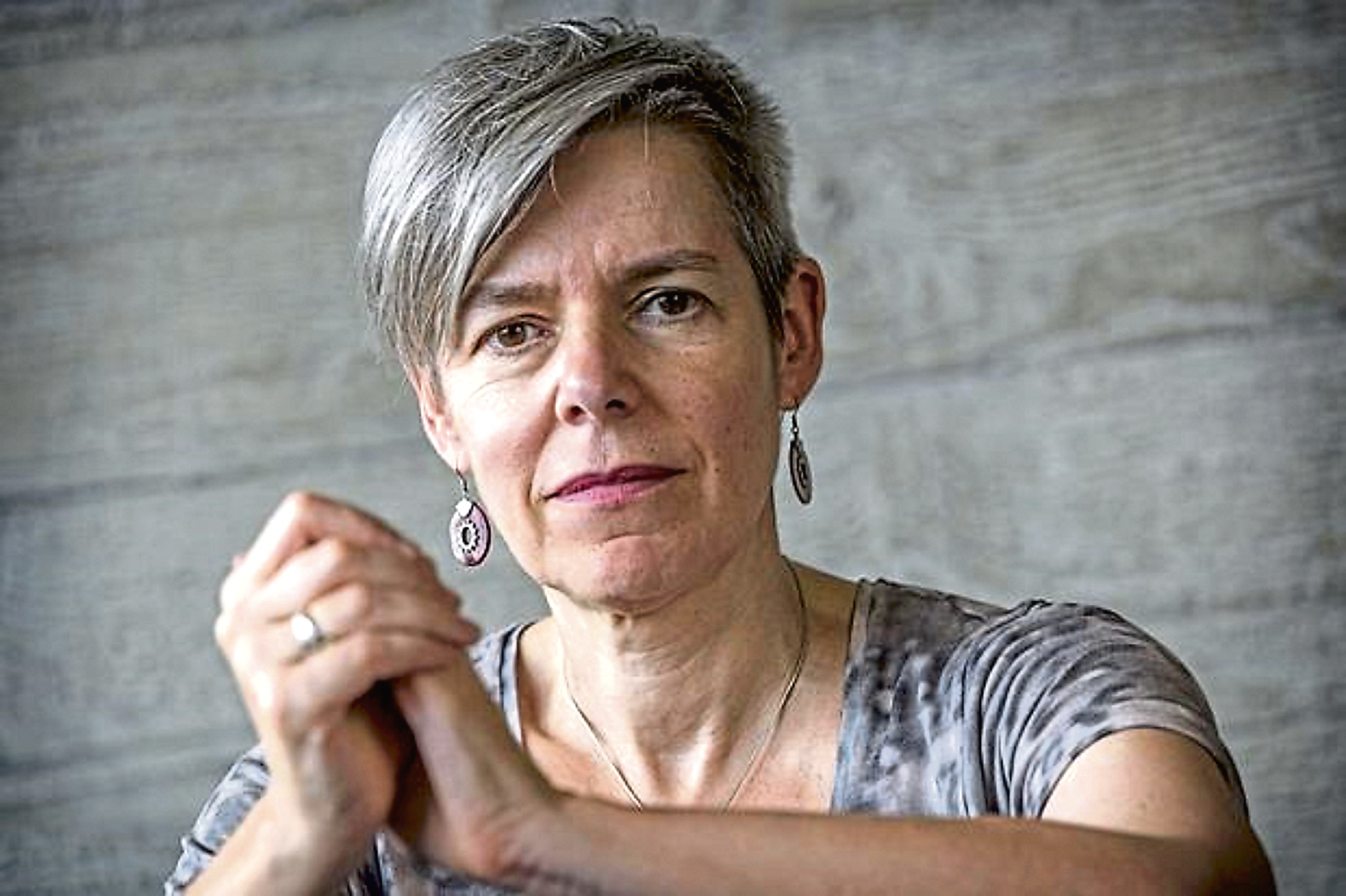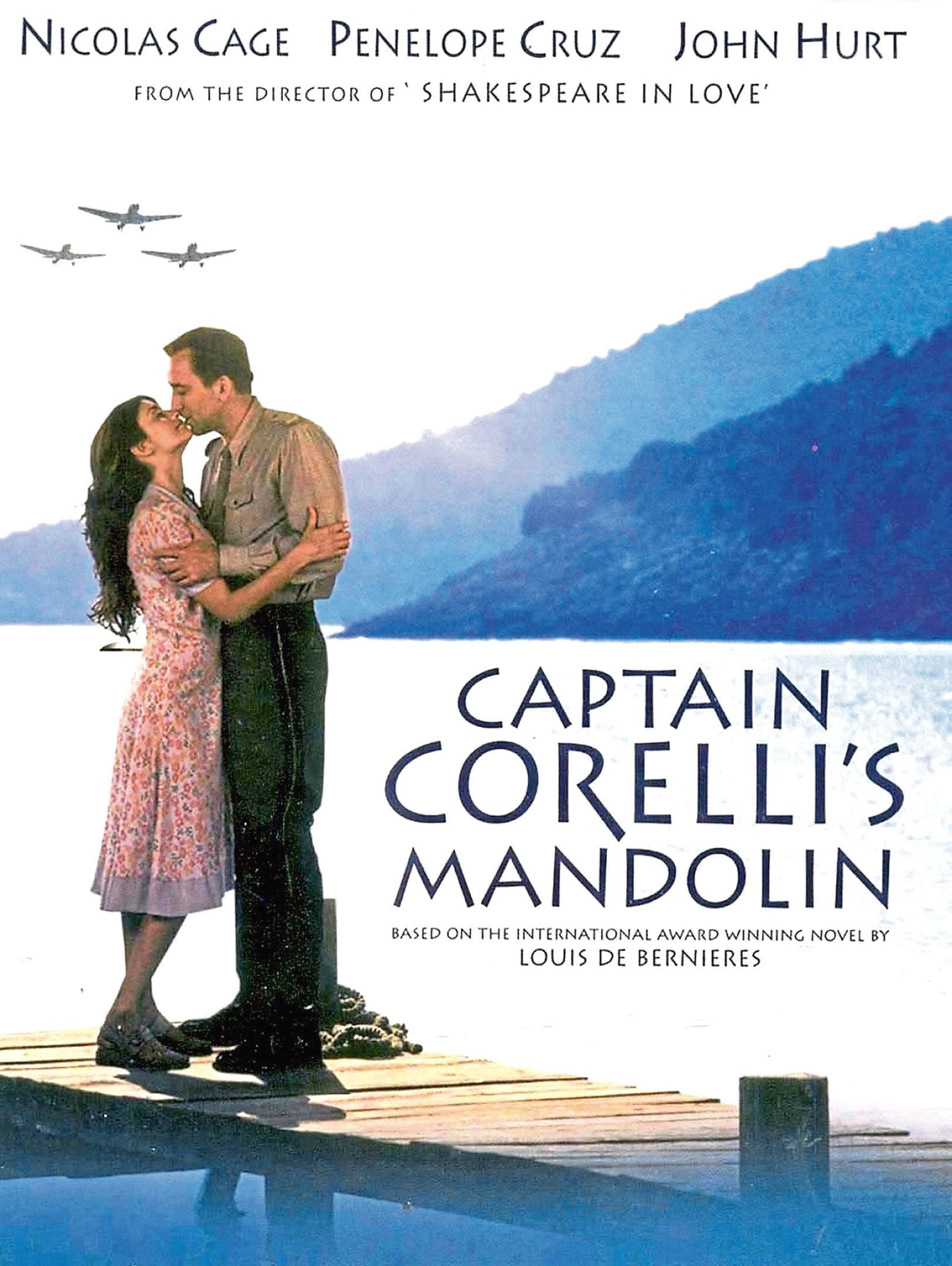
IT remains one of the world’s most popular novels, an enduring, sun-dappled story of love, war and music.
Now one of Scotland’s most talented writers is bringing Captain Corelli’s Mandolin to the stage.
And Rona Munro, who has written a series of acclaimed plays and TV shows, admits the challenge of adapting such a popular bestseller, first published in 1994 before selling three million copies, was daunting.
The epic love story is set on the Greek island of Cephalonia during its Italian and German occupation in the Second World War and Rona said turning the tale into a play needed a lot of care, adding: “The novel is huge, so you have to look at how to keep the essence of it and also make a good piece of theatre.
“It’s about making people feel what they felt when they read the book but finding your own way of doing what the original writer did.”

The play, which will reach Edinburgh and Glasgow next summer, is only one of a series of projects on Rona’s slate in recent times.
She has collaborated with author Ian Rankin on the first stage incarnation of fictional detective John Rebus, which was at the King’s Theatre in the capital last week.
And her adaptation of My Name Is Lucy Barton was on in London’s West End over the summer, with Hollywood star Laura Linney playing the title character, while a second production of Rona’s 2009 play, The Last Witch, is currently on tour in Scotland.
“It’s been a busy couple of years and there’s been a lot of dotting around but I’d much rather be at home, as I am now, just walking the dog and writing – that’s a good day,” said Rona.
She would also have been relaxing in front of the TV last Sunday with a special interest as Jodie Whittaker became the first woman to play Doctor Who.
Rona, who wrote the acclaimed Bold Girls and The James Plays trilogy, is the only person to have written for both the classic and revived versions of the long-running sci-fi show.
She scripted the final three episodes of the old series in 1989, when Sylvester McCoy was the Doctor, and returned last year when Peter Capaldi was in the role.
“It’s fabulous that Jodie has the role. She’s fantastic,” said Rona. “Everyone will forget about it within a few episodes as the role is not about gender. It’s more profound than that.
“If it wasn’t such an iconic series and with 12 actors having previously played the part, I don’t think anyone would even be commenting on this in the 21st century.
“I don’t believe the writing will change either just because it’s a female who is in the role. Doctor Who is Doctor Who.
“When you write for the series, it goes beyond character and gender, it’s just a certain something that makes it the Doctor, built up by all of the people who have played the character over the years.”
Doctor Who was one of the first programmes that 59-year-old Rona can remember watching while growing up in Aberdeenshire, and the experience stayed with her.
“I was only about three years old and William Hartnell was the Doctor – it was the first series,” she said.
“A scene terrified me and I can remember watching it from behind the sofa. I shouldn’t have been viewing it at all but my brother had it on.
“Of course, you don’t think you will ever have the chance to write for Doctor Who but when I was at the start of my TV career, I went along to a BBC workshop, and Andrew Cartmel (script editor) was there.
“I approached him and asked what I needed to do to write for the show. We got talking and he invited me on board.
“The BBC at the time wasn’t in love with Doctor Who and it was only being kept alive by the hardcore fans, so the makers were being left to their own devices and there wasn’t much scrutiny.
“The BBC didn’t have any objections that a baby writer was working on it.
“I would always like to write for it again but it’s about having the right idea at the right time.”
It was a different process entirely with Rebus: Long Shadows, an original story not based on any of Rankin’s previous tales about his Edinburgh detective.
“It was a good collaboration – I said I can do character and dialogue while Ian is very good with the plot.
“I read and re-read the books so I had a sense of the character. It’s written primarily for Rebus fans but works as a standalone for broader audiences.”
Rona went to Birmingham, where the show opened, to see it but admits that watching it in Edinburgh, where actor Charles Lawson took ill on opening night, was a different proposition.
“I was frightened and terrified in equal measure,” she laughed. “That’s the audience that knows. We can’t get anything past them there.”
Scottish drama is the envy of Europe
Rona Munro is currently hard at work on a sequel to The James Plays, her acclaimed trilogy about King James I, II and III.
“Whether anyone wants any more remains to be seen,” she smiled. “Hopefully I’ll get some interest from theatres wishing to put them on.
“I feel it’s important we make Scottish plays for Scottish audiences but then that limits the amount of money that becomes available for a production.
“But if you write a play about Scottish characters or in Scots or about Scotland, audiences here will turn out to see it, and that is the envy of a lot of people in Europe and even England.
“I think we can be enormously proud of the theatre scene in Scotland but it’s success is dependent on funding.”

Enjoy the convenience of having The Sunday Post delivered as a digital ePaper straight to your smartphone, tablet or computer.
Subscribe for only £5.49 a month and enjoy all the benefits of the printed paper as a digital replica.
Subscribe